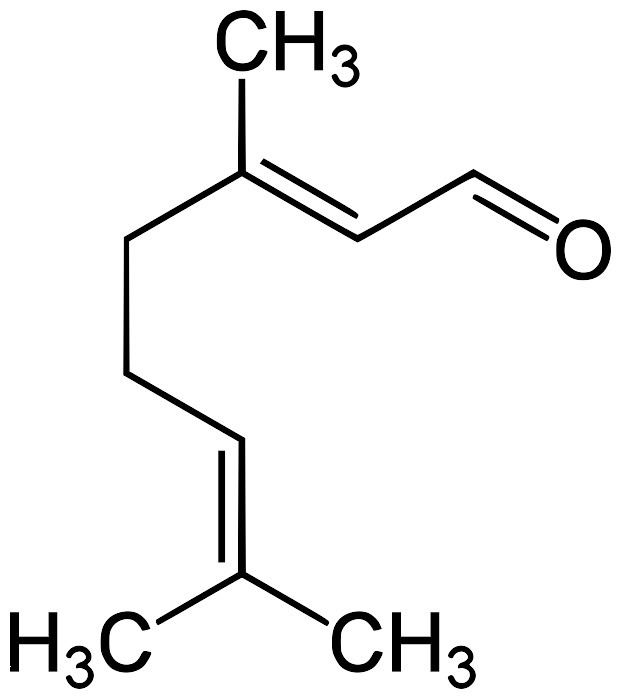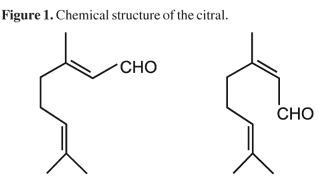Formula C10H16O Density 893 kg/m³ | Molar mass 152.24 g/mol Appearance Pale yellow liquid | |
 | ||
Related alkenals | ||
Citral, or 3,7-dimethyl-2,6-octadienal or lemonal, is either a pair, or a mixture of terpenoids with the molecular formula C10H16O. The two compounds are double bond isomers. The E-isomer is known as geranial or citral A. The Z-isomer is known as neral or citral B.
Contents

Occurrence

Citral is present in the oils of several plants, including lemon myrtle (90-98%), Litsea citrata (90%), Litsea cubeba (70-85%), lemongrass (65-85%), lemon tea-tree (70-80%), Ocimum gratissimum (66.5%), Lindera citriodora (about 65%), Calypranthes parriculata (about 62%), petitgrain (36%), lemon verbena (30-35%), lemon ironbark (26%), lemon balm (11%), lime (6-9%), lemon (2-5%), and orange.
Uses

Geranial has a strong lemon odor. Neral's lemon odor is less intense, but sweeter. Citral is therefore an aroma compound used in perfumery for its citrus effect. Citral is also used as a flavor and for fortifying lemon oil. It also has strong antimicrobial qualities, and pheromonal effects in insects.
Citral is used in the synthesis of vitamin A, ionone, and methylionone, to mask the smell of smoke.
Health and safety information
Two studies have shown 1-1.7% of people to be allergic to citral, and allergies are frequently reported. Citral on its own is strongly sensitizing to allergies; the International Fragrance Association recommends that citral only be used in association with substances that prevent a sensitizing effect. Citral has been extensively tested and has no known genotoxicity, and no known carcinogenic effect, but animal tests show dose-dependent effects on the kidneys.
